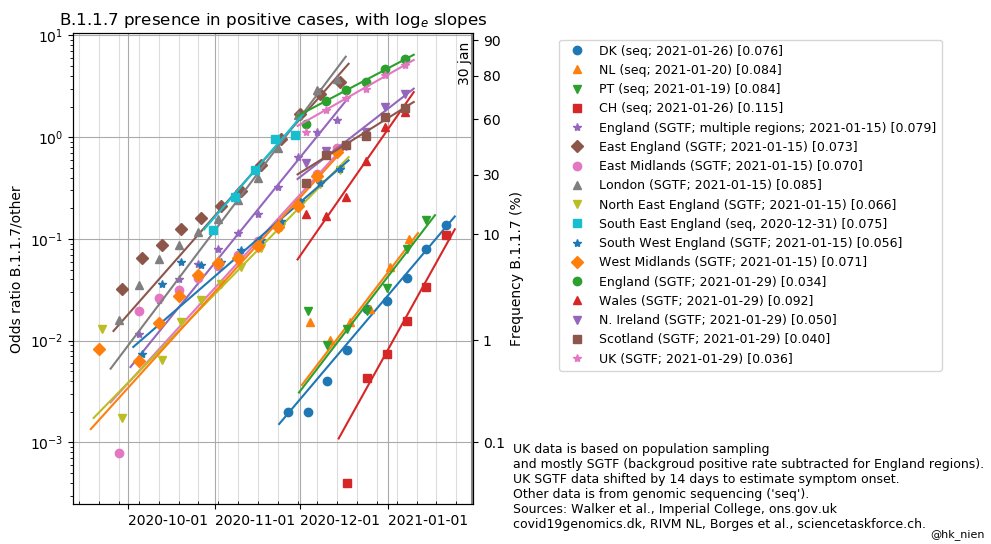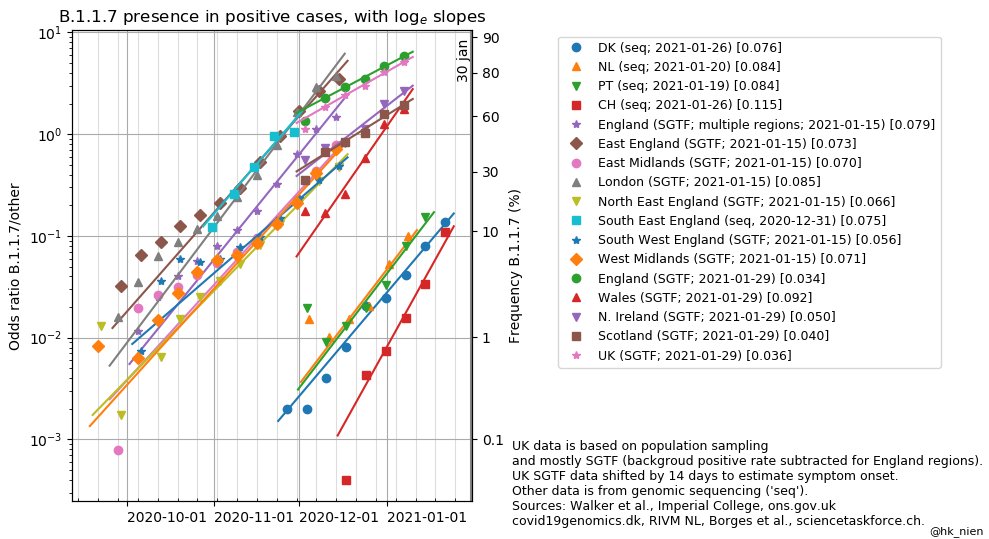
1/ Data on the #UKvariant #B117 in a number of countries and UK regions. The (odds) ratio of the B.1.1.7 variant versus other variants would be expected to grow exponentially (straight line on a logarithmic scale) independent of behavior (lockdowns etc.). 

2/ A log slope 0.07 means that the odds ratio increases by 7% per day. The publication date for each dataset is indicated. The datasets are either based on S-gene target failure (SGTF; PCR tests with some selectivity for the B.1.1.7 mutation) or on full genomic sequencing.
3/ The slope can be converted to a ratio in reproduction numbers: R_B117/R_other = exp(slope*Tg) where Tg is the nominal generation interval (value generally assumed between 4 and 6 days).
4/ With the 15 Jan SGTF data, I applied a background correction; see
https://twitter.com/hk_nien/status/1353417070260744197. More recent UK SGTF data has much lower slopes than the older SGTF data. Not clear why. I suspect low specificity/sensitivity of SGTF.
5/ With odds ratios up to 6 in England, 85% of the the samples tests positive for the UK variant. SGTF might have some false negative rate for detecting the UK variant, which becomes significant at such high odds ratios.
6/ Meanwhile, older UK data and sequencing data from Danmark, Netherlands, Portugal, and Switserland (CH) show growth rates between 7.6% and 11.5% per day. That means a doubling time between 6 and 9 days; a ratio in R values between 1.36 and 1.58 (4 days generation interval).
7/7 Data sources: DK covid19genomics.dk/statistics, NL tweedekamer.nl/sites/default/…, PT virological.org/t/tracking-sar…, CH sciencetaskforce.ch/nextstrain-phy…, UK 2020-12-31 imperial.ac.uk/media/imperial…, UK 2021-01-15 doi.org/10.1101/2021.0…, UK 2021-01-29 ons.gov.uk/peoplepopulati….
8/ I got a message that percentages are easier to understand than odds ratios. Here is a version of the plot with percentages indicated. Percentages saturate at 100%, which makes them less suitable for showing the exponential growth of B.1.1.7, though. 

• • •
Missing some Tweet in this thread? You can try to
force a refresh















